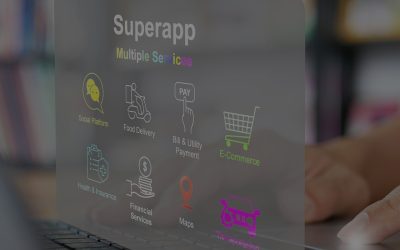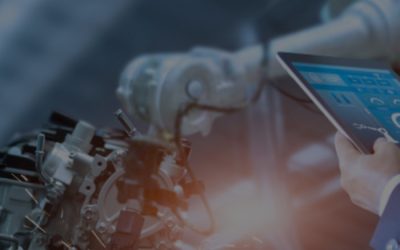Location Intelligence In The Age Of Covid-19 For Employee Safety And Optimal Resource Allocation
“The unseen enemy is always the most fearsome” – George R.R. Martin
In today’s context COVID-19 is the invisible enemy that has changed the world. Almost every aspect of human life has been hit hard by the virus. Businesses in different sectors have shut down as people are being forced to pause their normal life and stay indoors to avoid getting infected.
OECD (Organization of Economic Co-operation and Development) in its interim economic assessment has forecasted that global economic growth will be just 2.4% this year, down from 2.9% in 2019. The worst hit industries are Aviation, Travel, Hospitality and Tourism. Other industries such as Manufacturing, Food, Education, Media, Energy, etc. have suffered major setbacks as well. This sudden confinement of human resources has changed how business is done. We now need innovation at an unprecedented pace to counter the slump.
Even as the pandemic spreads, many economies are re-opening for business. They cannot afford to let economic activity grind to a complete halt. This increases the need for innovative solutions that also ensure the safety and well-being of employees. What is required are solutions that harness modern tools and technology and can stand the test of time. The solutions also need to be efficient and agile so that they can be applied to different sets of problems arising from the spread of the pandemic.
Build a data-driven solution using Location Intelligence (LI) to optimize resource allocation and safety
Here we will discuss and showcase a unique data-driven algorithmic solution that helps connect and communicate with various resources in different geographies. The solution has helped a client by optimizing resource allocation based on geo-spatial dimensions like location through spatial co-ordinates, distance metrics and real time data about the spread of COVID-19 along with key business metrics.
Before we discuss the solution, it would help to understand the context. Imagine that you own a consumer goods business and have agencies that conduct market research on your behalf. Now, due to the pandemic lockdowns are forcing you to shut down your major operations.
With unpredictable and inconsistent lockdowns and the phased opening of markets, it becomes a business priority to study the impact of this on consumer behavior and understand the new needs and demands. This, in turn, helps create new products. The foremost question would be:
what should the ideal marketing mix be? The wrong answer could lead to a loss of consumers and a perpetual loss of revenue.
The answer lies in a massive data collection exercise from various touchpoints across the operational regions, collating them, analyzing them and then arriving at decisions. But how do you mobilize resources to conduct the market research while keeping researchers safe in the field? How do you guide sales without the knowledge of areas that are open for business and those that are not on any specific day?
Adopt adaptive data science models for scalability and faster decision making
The solution is to integrate data from various sources, both in-house and third party, process the data via Adaptive Data Science models to enable autonomous scalability and construct various business intelligence (BI) layers as per the need of stakeholders. This enables easy consumption of data and expedites decision making at every level of engagement.
In the world of BI, it is said that intelligent planning and execution requires intelligent and informed knowledge about one’s resources. At ITC Infotech we have engineered a solution aimed at fighting the unseen enemy. It provides customers with deeper, pandemic-related visibility for each of its assets. The model has 2 layers that interact with each other and enable accurate decision making.
The solution delivers a hierarchical resource allocation model in different geographies with the shortest path between the assets and containment zone status of their location as the primary constraints. It is a Heuristic Mathematical Pattern Search that utilizes live GPS information of the resources and allocates the nearest resources to each other in areas with no active cases of COVID-19. An automated data mining engine retrieves live COVID-19 information from our 3rd party vendor using API endpoints and sends it across with other relevant information about our assets for allocation. Information such as GPS location and the reporting hierarchy of the assets is sent to the Machine Learning Model, which allocates the resources in the form of a Local Network for areas with no active cases of COVID-19.

Mobilize resources using real-time LI of safe zones
The schematic diagram below depicts resource mobilization based on real time information on COVID-19 collected through APIs and spatial coordinates for resources across hierarchies. Tier 5 (T5), being the governing body, controls the other tier members with updated information in order to enable quicker mobilization of resources through informed decisions. Sufficient provisions have also been made so that the assets at each level can interact with each other, thus enabling efficient exception handling. The result is a tree-like structure where each asset at a particular level is connected to another asset on a different level with the shortest geographical path that has no active COVID-19 cases.

Build asset LI dashboard for an integrated view
Once the solution’s analytical structure was developed, the next target was to enable visualization of the solution for different stakeholders. To accomplish this we used Power BI as the primary visualization tool. Microsoft Azure SQL was used as the managed database service to develop the dashboards. This helped achieve the desired scalability, availability and uptime. The dashboards showcased COVID-19 related information for each asset’s location, including the zone color, containment status and also their operational status (active or closed). A snapshot of the visualization is provided below.


Modular solution for faster deployment
Keeping the urgency and need in mind, the team was able to integrate, automate and deploy the solution within a few weeks. This minimized the impact of the lockdown on operations as each day of delay resulted in lost revenue. The critical piece of information around which the solution revolves is the real time geo-coordinates of the assets and their operational readiness status (active or not) post the lockdown. To facilitate this, the team created a mobile application which captured and recorded the latitude – longitude and status of each asset.
The model was further re-engineered so that it could be adopted as a stand-alone solution or could be integrated as a module to a larger solution. At its core, the models in the solution use the principles of the LI which can enable or expedite decision making in businesses across different verticals and solve various problems.
Location Intelligence as a Service
LI is the methodology for transforming your location data (spatial coordinated and features) into business outcomes. LI empowers you to leverage the vast repositories of data built over the years through new methodologies that enrich business data with location, help visualize the result, and merge traditional temporal analytics with spatial analytics. LI has layers of Enrichment, Analysis, Visualization and Application.
The industries that can benefit from LI are CPG, Financial Services, Healthcare & Pharma, Logistics, Marketing & Advertising, Retail, Telecom, Transportation, Utilities and even state and local government bodies. The solution may be a component of the broader Fleet Planning, Site Selection, Geo-Marketing, Fleet Management and Supply Chain Optimization solutions.
ITC Infotech is using LI for several CPG clients as an aid to overcoming the COVID-19 situation and improving their operational efficiency, employee safety as well as the ability to adhere to government regulations and guidelines in near real-time. For more details, connect with us on how your business can leverage LI to restore operational workflows during these trying times.
Author:
1. Indranil Seal
Associate Data Scientist
2. Prateek Bansal
Lead Consultant, Business Consulting
3. Divya Chawla
Lead Consultant, DATA











